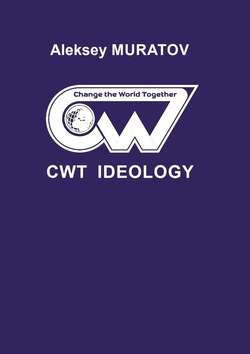Читать книгу CWT Ideology - Алексей Муратов - Страница 4
.
THE WORLD TODAY
ОглавлениеThe Earth and humankind are being held hostage to
the political and financial system. This system protects the
interest of financial elites and is bitterly unfair towards people
and destructive towards nature. This system is based on the
colonization and exploitation of people, states, energy, minerals
and technologies. The way global capital is being exploited is at
the root of religious conflicts between people and communities.
For centuries the financial system has been taken control of
the world’s resources and markets, and influenced governments,
mass media, education, medicine and even our food supply. A
few of the world’s richest families and their corporations exert
direct control over the scope of all major human activity.
How could this happen? To answer this question let’s turn
to history.
The history of money extends back over thousands of
years. At the dawn of the human civilization, when there was
no money, only hard work could give you clothing, shelter and
food. Over time the main human occupations (gathering and
hunting) moved to the next level and our ancestors could raise
cattle and grow their own food. As a result, a surplus of goods
and produce started to appear.
A tribe which had a large number of animal skins but short
of grain could exchange with another tribe that had a surplus of
grain. This is how bartering started. As humans developed, the
barter also developed and covered an even greater number of
goods and services.
The most famous example of bartering in human history
is the bargain of Peter Minuit in 1626. For trinkets and beads
costing $24 he obtained the island of Manhattan. In 1993 the
island was valued at $50 billion.
Gradually people realized that carrying a bag of wheat or
dozens of skins for exchange was not very convenient. By trial
and error humans began using silver and gold as an equivalent
for exchange. Gold and silver could not be faked or spoil, so
they served as money for a long time.
Jewelers began minting gold and silver coins. They needed
a reliable storage for gold and silver ushering in the first safes.
Soon, traders and the general population began to rent space in
the jewelers safes to store their coins and valuables. So, long
before credit existed jewelers began to lease shelves in their
safes earning income from that business.
Years later one jeweler began to understand that people
never came for their gold all at once. This occurs because
people were holding onto obligatory bills given by the
jeweler as a proof of the stored gold. These bills were
considered real money in the market instead of the gold
as it was more convenient and easy to exchange. Sellers
of goods accepted them as receipts for payment of goods.
Borrowers began to take loans in this paper form instead
of real gold.
The jeweler came up with another business – he started
to lend his gold at an interest. He used his own and the
stored gold of the merchants and townspeople, who kept it
for safekeeping. But since everyone never come at the same
time, this business grew rapidly. The ability to give loans
was limited only by the amount of gold in the safe. Then
the bankers came up with an even more daring idea. Since
they were the only ones who knew how much gold was in
the safe they could issue obligatory bills for gold that they
did not have. If all the investors would never come at the
same time to collect, then who would find out? They figured
out how to make money out of thin air. This was the origin
of the phrase “to make money out of thin air”. Jewelers
who realized how to make money out of thin air are today’s
bankers.
That principle became the ground of the existing
financial system that began to take shape about 400 years
ago. Bankers began to lend to governments, who used that
money to wage wars of conquest, and to merchants, who
conducted “business” by exploiting new territories. Since
the governments depended on the banks’s money, they not
only allowed them to make money out of thin air but also
legitimized this process by skewing the ratio making it 9
to 1. Today this is called a “fractional reserve” system.
Today this works in most of the worlds banks and
accepted as a part of the banking philosophy. For example,
if you deposit $1000 into an account, the bank can then
turn around and lend someone else $10,000 in the form
of credit based on this fractional reserve system – legally
creating money out of thin air.
